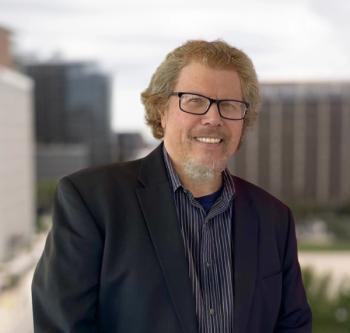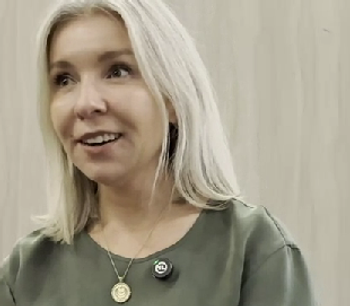
- Psychiatric Times Vol 25 No 13
- Volume 25
- Issue 13
Psychiatric Medications for Children
Too often news headlines exert a major influence on our patients-and nothing in child psychiatry grabs headlines like the alleged overprescription of medicines. Physicians sidestep the debate, assuring their patients and themselves that each prescription is written only after careful consideration of risks and bene-fits.
Too often news headlines exert a major influence on our patients-and nothing in child psychiatry grabs headlines like the alleged overprescription of medicines. Physicians sidestep the debate, assuring their patients and themselves that each prescription is written only after careful consideration of risks and bene-fits. However, our use of the time-honored risk/benefit ratio is prone to error. We and our patients sometimes overestimate or underestimate risks and benefits, which leads to treatment mistakes of omission and commission. In the age of “patient as educated consumer,” physicians must teach patients this crucial principle and be wary themselves of falling victim to its subtleties.
Ours is a world in which pharmacological solutions are ubiquitous and, therefore, expected. We are bathed in advertisements and nurtured on articles extolling medicine’s powers. And, to be sure, medicine often works.
When a patient is in pain, medicine has become the favored remedy. Sometimes its use is backed by solid research and sometimes only by clinical lore. But, when nothing else is working, we consider writing, and our patients often expect the “Hail Mary” prescription, hoping to score a pharmacological touchdown.
Sometimes, however, a prescription represents our overestimation of the benefit of medicine. When Mrs Jones calls because an always-difficult Josh is even more agitated and explosive than usual, she and we too quickly consider whether an atypical antipsychotic would help. When Mr Smith reports that Samantha is “depressed” because for the past month she’s been crying, avoiding her schoolwork, and staying home on weekends, he and we too quickly wonder if this might not be a job for SuperSSRI. We may fail to consider that Josh’s parents are in the throes of a contentious divorce or that having been dumped by her friends, Samantha has been struggling to find a comfortable place among a new group of peers.
Josh’s diagnosis is uncertain; perhaps it is adjustment disorder in a young man with a difficult temperament. And Samantha may simply be demoralized but may not fit the criteria for depression required of the research subjects whose improvement proved the efficacy of antidepressants. Both Josh and Samantha are suffering but not with a clearly diagnosed disorder and not with dysfunction mandating pharmacotherapy. However, as the medicine solution insidiously creeps into our mindset, a drug is considered and sometimes prescribed because the physician feels the need to do something-such as quell an anxious mother’s frustration or a worried father’s concern. The clinician who jumps to write the prescription forgets that children and adolescents are often exquisitely sensitive to their surroundings and may not require medicine. In doing so, the benefit of medicine is overestimated.
We also overestimate the benefit of medicine when we ignore the benefits of nonpharmacological treatments. For example, the Pediatric OCD Treatment Study has shown that cognitive-behavioral therapy (CBT) is as effective as SSRIs in the treatment of obsessive-compulsive disorder.1 In the long run of a child’s life, the lessons of CBT might have greater staying power than medicine. But how many physicians recommend CBT? How many patients forgo the rigors and expense of CBT and instead demand the relatively simple solution of medicine? If earlier generations of psychiatrists overestimated the benefits of psychotherapy, today’s clinicians risk over-estimating the benefits of medicine.
On the other hand, many medicines have been proved to be effective in treating life-altering and life-threatening disorders. Many underestimate the impact of psychiatric disorders. In doing so, they underestimate the potential benefit of medicines in relieving the child’s pain and changing the poor long-term prognosis. Those who minimize attention-deficit/hyperactivity disorder (ADHD) with the phrase, “He’s just being a boy!” or depression by recalling that “We all go through the difficulties of adolescence” are neglecting the literature on the negative outcomes of these and other psychiatric disorders of youth. There is ample research to show that depressed youths are at risk for recurrent depression and with it the potential for suicide, the third leading cause of death among teenagers.2,3
DiScala and colleagues4 have argued that the approximate 20% decrease in the number of SSRI prescriptions to children following the FDA public health advisory has led to an increased number of completed suicides among youth. If this is so, the benefit of SSRIs would have been underestimated, particularly relative to their risk. Many parents, frightened of medicating their child who has ADHD, overlook the fact that ADHD puts their child at greater risk for accidents and emergency department visits.5,6 The data are clear: accidents, not stimulants, are the number one killer of children and adolescents. In particular, car accidents are the leading cause of death among teenagers in the United States. Stimulants might prevent some accidents among young people with ADHD. For example, Cox and colleagues7 showed that stimulants improve driving performance in adolescents with ADHD.
Current research is refining our understanding of which disorders put children at risk for poor outcomes. We cannot ignore that some disorders carry very significant risk, however. If medicine can help minimize that risk, the patient (and often society) benefits greatly.
If the risk of psychiatric disorders and the potential benefit of medicine are underestimated by some, the risk of medicine is underestimated by others. In child psychiatry, we are often flying without an instrument panel. Many of the medicines we use are not FDA-approved for children. Many medications that are approved have been studied only in a few hundred subjects who met research criteria for the disorder being investigated. These are not the diagnostically messy patients often seen in clinical practice.
Moreover, we often have insufficient information to estimate the risk of rare adverse effects. For example, what should we make of a report of 4 patients who stopped growing while taking SSRIs?8 It is hard to know-and that is the point. Or, if we do not know the means by which SSRIs so often affect adult sexuality, how comfortable should we be giving them to developing children and adolescents? Even the issue of stimulants and possible growth suppression, while studied for decades, lacks clear answers.9 In addition, approximately one-third to one-half of youths who take a psychiatric medicine take more than 1 psychiatric drug.10,11 In other words, polypharmacy is common, if not the rule. Yet there are very few studies that prove the efficacy, much less explore the risk, of polypharmacy in children. In short, there is much to learn and we must prevent ourselves, and our patients, from becoming cavalier. We must beware of underestimating risks.
Lastly, often we, or more commonly our patients and their families, overestimate the risk of medicine. Headlines scream about the risk of sudden death from stimulants and patients want to discontinue them despite the lack of a convincing causal relationship.12 The small increase in suicidality (not completed suicide) associated with the pooled group of antidepressants for a pooled group of youths with a host of diagnoses leads some parents to shun medicine that is potentially lifesaving.13 Patients and their parents need to understand how physicians evaluate risk. They must understand the need to evaluate the frequency of an adverse effect and to compare the frequency of that event in the general population and in a group of patients taking placebo. They must understand that if an adverse effect is not lethal, irreversible, or very painful, the drug may be worth the risk. In short, in a world of increasing pharmacological interventions and a world in whichthe Internet is a first source of information for many, patients must understand how to evaluate risk.
Recently, I recommended fluoxetine for a depressed adolescent girl. After hearing about the drug’s potential risks and benefits, her parents agreed with this plan. However, the patient’s grandfather, a vascular surgeon, did not. At the parents’ request, I called the grandfather to answer his questions. He expressed dismay that I would use a medicine that has caused children to commit suicide to treat a disorder that reflected his granddaughter’s conflict with her overbearing mother. After an explanation of depression and the potential risk of suicide and a discussion of the questionable association of SSRIs and suicidality, he agreed that medicine was worth a trial.
This story demonstrates the reasoned use of the risk/benefit ratio and the need to explain its use in child psychiatry, even to another physician. How much more important is the need to help parents who are not physicians understand this crucial ratio!
When writing a prescription becomes the physician’s reflex and blindly receiving or rejecting a prescription becomes the patient’s expectation, it is time for each to evaluate the inevitability of this behavior. The choice to accept or reject medication should be preceded by careful consideration of the possible risks and benefits of medicine versus the risks and benefits of other treatments or of no treatment. Only then will each prescription receive the deliberation it deserves. And only then can we confidently confront the concern about overprescribing.
References:
References
1. Pediatric OCD Treatment Study (POTS) Team. Cognitive-behavior therapy, sertraline, and their combination for children and adolescents with obsessive-compulsive disorder: the Pediatric OCD Treatment Study (POTS) randomized controlled trial. JAMA. 2004;292:1969-1976.
2. Kovacs M, Feinberg TL, Crouse-Novak MA, et al. Depressive disorders in childhood: I. A longitudinal prospective study of characteristics and recovery. Arch Gen Psychiatry. 1984;41:229-237.
3. Kovacs M, Feinberg TL, Crouse-Novak MA, et al. Depressive disorders in childhood: II. A longitudinal study of the risk for a subsequent major depression. Arch Gen Psychiatry. 1984;41:643-649.
4. Gibbons RD, Brown CH, Mann JJ, et al. SSRI prescribing rates and adolescent suicide: is the black box hurting or helping? Psychiatric Times. 2007;24:33-37.
5. DiScala C, Lescohier I, Barthel M, Li G. Injuries to children with attention deficit hyperactivity disorder. Pediatrics. 1998;102:1415-1421.
6. Leibson CL, Katusic SK, Barbaresi WJ, et al. Use and costs of medical care for children and adolescents with and without attention-deficit/hyperactivity disorder. JAMA. 2001;285:60-66.
7. Cox DJ, Merkel RL, Moore M, et al. Relative benefits of stimulant therapy with oros methylphenidate versus mixed amphetamine salts extended release in improving the driving performance of adolescent drivers with attention-deficit/hyperactivity disorder. Pediatrics. 2006;118:e704-e710.
8. Weintrob N, Cohen D, Klipper-Auerbach Y, et al. Decreased growth during therapy with selective serotonin reuptake inhibitors. Arch Pediatr Adolesc Med. 2002;156:696-701.
9. Swanson JM, Elliott GR, Greenhill LL, et al. Effects of stimulant medication on growth rates across 3 years in the MTA follow-up. J Am Acad Child Adolesc Psychiatry. 2007;46:1015-1027.
10. dosReis S, Zito JM, Safer DJ, et al. Multiple psychotropic medication use for youths: a two-state comparison. J Child Adolesc Psychopharmacol. 2005;15:68-77.
11. Duffy FF, Narrow WE, Rae DS, et al. Concomitant pharmacotherapy among youths treated in routine psychiatric practice. J Child Adolesc Psychopharmacol. 2005;15:12-25.
12. Pliszka S; AACAP Work Group on Quality Issues. Practice parameter for the assessment and treatment of children and adolescents with attention-deficit/hyperactivity disorder. J Am Acad Child Adolesc Psychiatry. 2007;46:894-921.
13. Hammad TA, Laughren T, Racoosin J. Suicidality in pediatric patients treated with antidepressant drugs. Arch Gen Psychiatry. 2006;63:332-339.
Articles in this issue
about 17 years ago
Two Stories We Tell Ourselves About Cancerabout 17 years ago
Dignity in the Gray Zone Indiana v Edwardsabout 17 years ago
An Epidemic of Depressionabout 17 years ago
Drug Makers to Report Physician Paymentsabout 17 years ago
The Facts About Violence Against Historically Disadvantaged Personsabout 17 years ago
Vets Suicide Hotline on the Hot Seatabout 17 years ago
New Link Found Between Brain Protein and Alzheimer DiseaseNewsletter
Receive trusted psychiatric news, expert analysis, and clinical insights — subscribe today to support your practice and your patients.

















